Haibike offers a wide range of performance oriented electric bikes including the Fullseven RX here which is a full suspension 27.5″ model… see where they got that name from? It used to be called the FS RX or FS 27.5″ in 2014 and aside from the name, most of the bike remains unchanged (which isn’t a bad thing). It’s one of my favorite models in the line because it keeps price relatively low while offering a high end Shimano XT drivetrain, hydraulic M615 disc brakes and RockShox Recon Gold air suspension (with remote lockout). It’s impressively light at just ~48 lbs and comes in three frame sizes for a performance fit. Note that the FSRX was available in four frame sizes and you can still get that model in the smallest 40 cm as a substitute for the Fullseven in the US (they had extras in that size). The top tube is angled for comfortable stand over and most of the electronic wires, shifting cables and brake lines are internally routed. This is an electric bike that’s responsive, powerful and sturdy with 10 cogs for climbing or blasting down hills. It’s got an integrated sprocket equalizing system with narrow-wide tooth configuration to reduce chain slip, a chain guide plate on the front sprocket to reduce snags and drops and a sturdy plastic casing to protect the drive unit from rocks, sticks and other trail debris. There’s not a lot to complain about here but the price did rise a bit when they changed the name and upgraded a few components. This is a German engineered mountain bike with electric assist… you don’t get a throttle, the tires won’t spin out and the top speed is 20 mph in America. Power fades smoothly as you reach this mark and I’ve rarely topped it with pedal power on flat trails due to the weight, knobby tires and suspension. For downhill sections it’s easy to reach 30+ and there’s no drag thanks to a freewheeling system on the motor. Other quick highlights include a tapered head tube for handling strength, four bar linkage system on the rear swing arm with motor and battery weight factored into the design, light weight hydroformed tubing and oversized 203 mm front and 180 mm rear disc brake rotors for excellent stopping power.
Driving this bike is a 350 watt geared centerdrive motor from Bosch. It offers 60 newton meters of torque and responds to the rear wheel speed, your pedal cadence and pedal torque to switch on and off smoothly and quickly. It also has shift detection built in so you’ll experience less wear on the chain and sprocket teeth over time. While many other mid-drive electric bikes use traditional sized chainrings, Bosch systems use smaller sprockets up front that rotate about 2.5x for every pedal stroke. This allows the motor to operate at a higher RPM and gain a mechanical advantage while pulling the chain. I think it also allows for faster chain stop as the motor disengages. These front sprockets come in three sizes but the manufacturer identifies and produces the optimal configuration for each application. The Fullseven RX uses one of the smallest sizes, it’s a 16 tooth sprocket to improve climbing power and they’ve designed in the bash plate and SES equalizing system mentioned earlier to reduce kickback on rough terrain. As shown in the video, at higher RPMs there is a distinct whining noise produced by the motor but that is somewhat masked by the sound of your tires rolling over dirt, sticks and rocks off-road. This is especially true with the very bumpy Nobby Nic tires on this bike vs. some other models in the Haibike lineup. Note that I was in the highest level of assist for most of my ride tests in order to accentuate motor noise and illustrate the speed with which the Bosch system starts and stops. The outer casing on the motor is purely aesthetic and designed to protect the metal-encased drive unit inside which bolts directly to the motor plate (joining the downtube, seat tube and chain stays).
Powering the XDURO Fullseven is a Bosch Powerpack 400 battery that mounts just above the motor, along the downtube. It’s positioned well for both weight distribution and protection in the event of a crash and it’s removable for transporting and charging off of the frame. You get 36 volts of power and 11 amp hours of capacity here which is a touch above average in terms of size but the way this power is used and the quality of the cells inside is well above average. Inside the pack are 18650 cells made by Samsung, they use an energy dense Lithium-ion chemistry designed to be light weight and long lasting. The pack only weighs ~5.5 lbs so you could conceivably buy a spare and toss it into a backpack for extremely long rides… the charger only weighs ~1.5 lbs and is fairly small as well so brining it along would be lighter if you’ve got a place to plugin. Reaching ~80% takes just one hour but completely filling the pack is closer to three due to cell balancing. I like that the pack itself has an LED readout on the side for showing your charge status (handy if you’ve got the pack inside and can’t remember if it has already been charged) and that it includes an ABUS locking core for security. The pack also has a sort of built in handle that makes it convenient to carry around, dropping it could crack the case and potentially damage the connections inside so this little touch is actually a big deal in my opinion. To really care for this pack and help it reach 1,000+ charge cycles I recommend storing in a cool, dry environment and maintaining a 20% to 80% fill at all times. If you haven’t used the bike for several months time, top off the battery. As mentioned in the video, you can charge the pack on or off the frame using the same unique connector plug. It would be difficult to accidentally use the wrong charger with this ebike and the plug locks in securely which feels good to me… there’s no risk of bending pins or creating a loose connection.
Operating the Fullseven e-bike is very intuitive and comfortable, even while riding, because there’s a large adjustable LCD display panel mounted the center of the handlebar as well as an independent button pad mounted near the left grip. These two interfaces put you in full control of the drive systems and offer multiple ways to do the same standard things. Once the battery is charged and connected to the frame you simply press the power button at the lower left corner of the Intuivia display panel and it comes to life. The LCD offers backlighting for use at dusk or dawn (you can activate it by pressing the bulb switch at the lower right corner of the display) and you can even wire in lights to run off of the same system (might check with your local ebike shop for help with this one). The Intuvia display is removable for storage and protection off of the bike… just make sure the set-screw isn’t installed (this optional screw is designed for security to make the display more permanent). All of the plastic buttons on the display and button pad produce a light “click” when activated which provides a bit of confirmation while riding (if you can’t look down at the display) and they have tested well for me in wet conditions. Near the top right corner of the display there’s a micro USB port (under a rubber flap) that is used for firmware updates and off-bike charging. This port may also be used while the display is mounted to the frame for powering your portable electronics (like an MP3 player or smart phone) but it does have limited voltage (five volts, 500 ma). Once the bike is powered on you can use the up/down keys to navigate through four levels of assist. The highest level offers the most power for climbing and speed but uses significantly more power. I find myself using the two lowest levels of assist most frequently and have been able to reach 50+ miles per charge on relatively flat, smooth terrain even with knobby tires and suspension bob. In addition to pedal assist, there is also a “zero” mode which lets the bike ride without power while still keeping the display on like a traditional cycle computer. The display is full of other readouts and you can explore them by using the little “i” icon (on the display or button pad). These readouts include trip distance, max speed and range (among others). I like range because it actually calculates your “estimated range” on the fly using the remaining battery level and your current assist setting as input.
The Fullseven is a sweet bike even without the electronic drive systems. It has an iconic frame design, application specific rear swing arm build and intricate drivetrain features. Even compared with other electric mountain bikes, it stands out in my mind and although it went up in price slightly from 2014 it’s still a good bargain and you do get that improved fork. The warranty is very solid with five years on the frame and two on the motor and battery and with Bosch you know you’re getting a solid product. I love that the frame comes in three sizes for improved fit and that the wheels offer quick release (for easy transport and maintenance) with 15 mm thru-axles for stiff and rugged operation. My only real complaint is the lack of a water bottle cage mounting point which is common on many full suspension bicycles and especially ebikes. Consider a CamelBak so you don’t get too thirsty out there. This is the most affordable full suspension electric bike from Haibike (one of the most affordable Bosch powered e-bikes from any manufacturer in the US) but it still hangs tough and is excellent for cross country and lighter mountain riding. For a more downhill oriented bike check out the Nduro RX or Nduro Pro. Worth noting here, the FS RX won ebike of the year at Interbike in 2014 and since the Full Seven is basically the newest version of that bike (with upgraded drivetrain and suspension fork) I think it’s worth calling out.
Pros:
- High quality air suspension by RockShox and Fox that are light and rugged with great adjustability (climb, trail, descend CTD on rear)
- Proprietary Sprocket Equalizing System (SES) reduces chain kickback, keeps the chain from slapping the rear stay when riding on rough terrain and reduces drops, the SES chainring has teeth that alternate from narrow to wide which helps reduce slipping
- The hydraulic disc brake rotors are enormous with 203 mm in the front and 180 in the rear for improved leverage, stiffer thru-axle design keeps brakes and wheel aligned under pressure and when going on/off for maintenance
- Quick release on front and rear wheel makes the bike easier to break down when transporting it in your car and comes in handy for trail maintenance, also makes the bike less intimidating to work on
- Excellent range thanks to the efficient centerdrive motor that leverages the rear cassette and high performance Lithium-ion 396 watt hour battery
- Great torque output, this bike can climb very well in Turbo mode when you’re pedaling with a lower gear
- Battery pack locks to the frame for security and uses a quality ABUS core with in-cut routed key, the pack can be charged on or off the frame for convenience or to reduce weight if you’d like to ride unpowered, the pack also includes an LED charge level indicator
- Intuitive display panel is large, easy to read and removable – the stand alone button pad is easy to reach without taking your hand off the left grip and “clicks” when pressed for tactile feedback (you don’t have to look down when riding)
- Stiff cranks, peformance wheelset, decent aluminum alloy XLC platform pedals, rigid frame for good power transfer when riding, tapered head tube for strength
- Great customer support and warranty from Currie Technologies in the US (part of Accell Group which owns Haibike)
- Three frame sizes offer better fit for a wider range of riders (45cm, 50cm, 52cm), you can still get the smaller 40 cm frame in the older FS RX model with the downgraded fork
- Shift detection helps reduce wear on the chain and sprockets, the bike experiences less mashing and is easier to ride as a result
- Nice paint and decals, all cables and wires are routed through the frame which reduces the potential for snags when riding or hauling this bike
- Good weight distribution (motor and battery centered and low on the frame) much less unsprung weight on this bike than a model that uses a hub motor – improved rear suspension performance
Cons:
- The battery pack takes up the space where a water bottle cage might otherwise mount and there isn’t one on the seat tube due to the rear suspension setup, consider and aftermarket accessory for the saddle rails or grab a CamelBak
- No throttle mode, this bike only offers pedal assist (like all Bosch powered systems) but will get a better range than if it did, top speed is limited to 20 mph but cuts out smoothly
- The brake levers do not include a motor inhibitor but the drive system is more responsive than others I’ve tested so it hasn’t been an issue
Resources:
- Official Site: http://www.currietech.com/haibike/
- More Pictures: https://goo.gl/photos/ssVfkLkeFVfJXJUu8



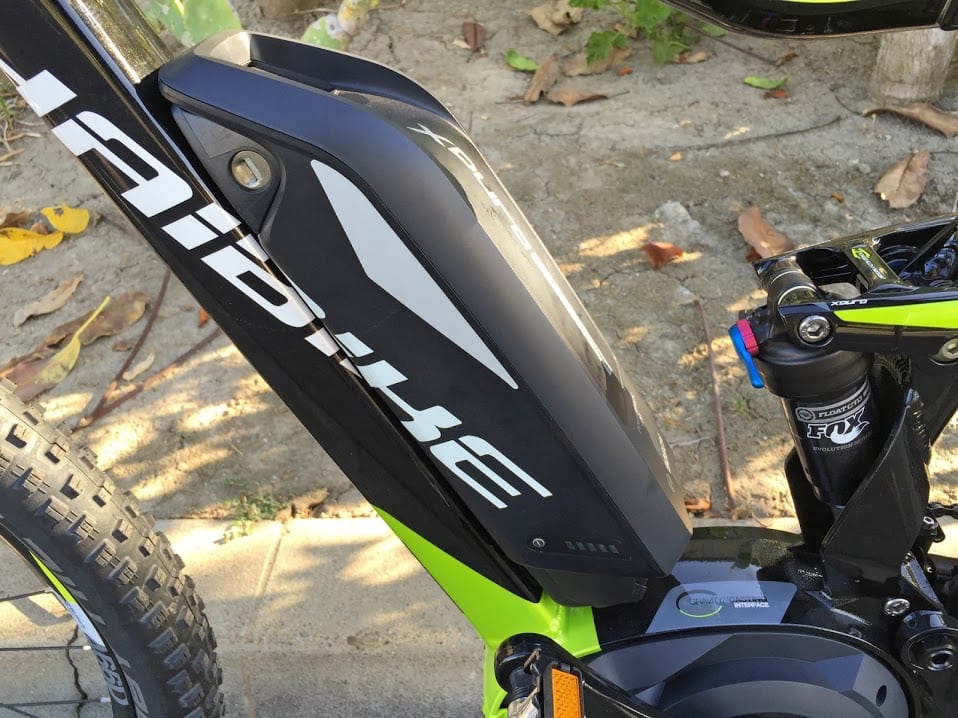
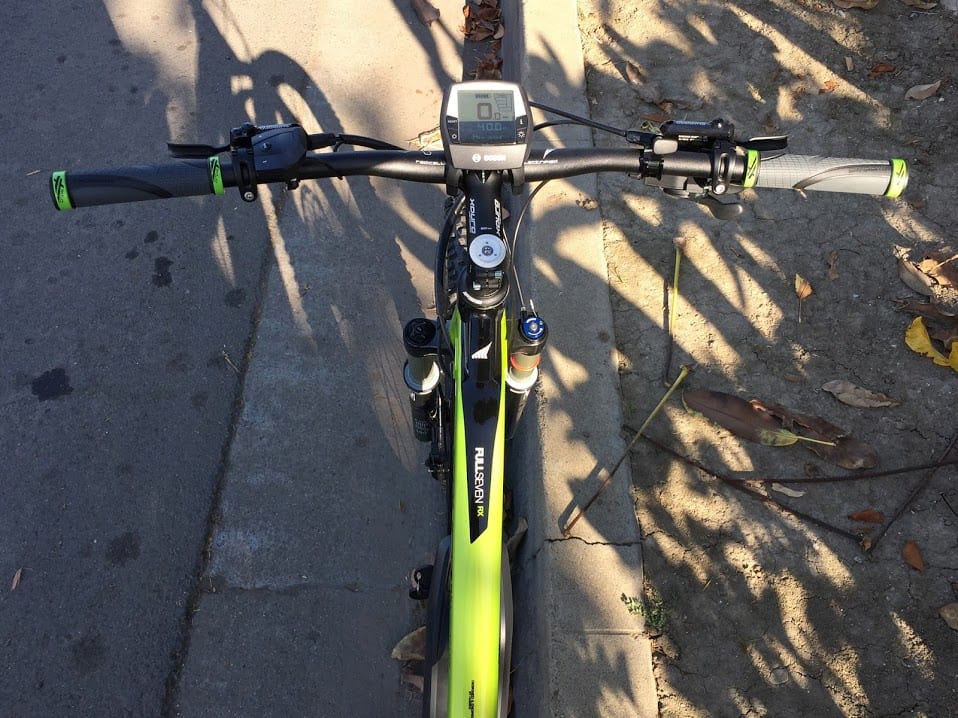
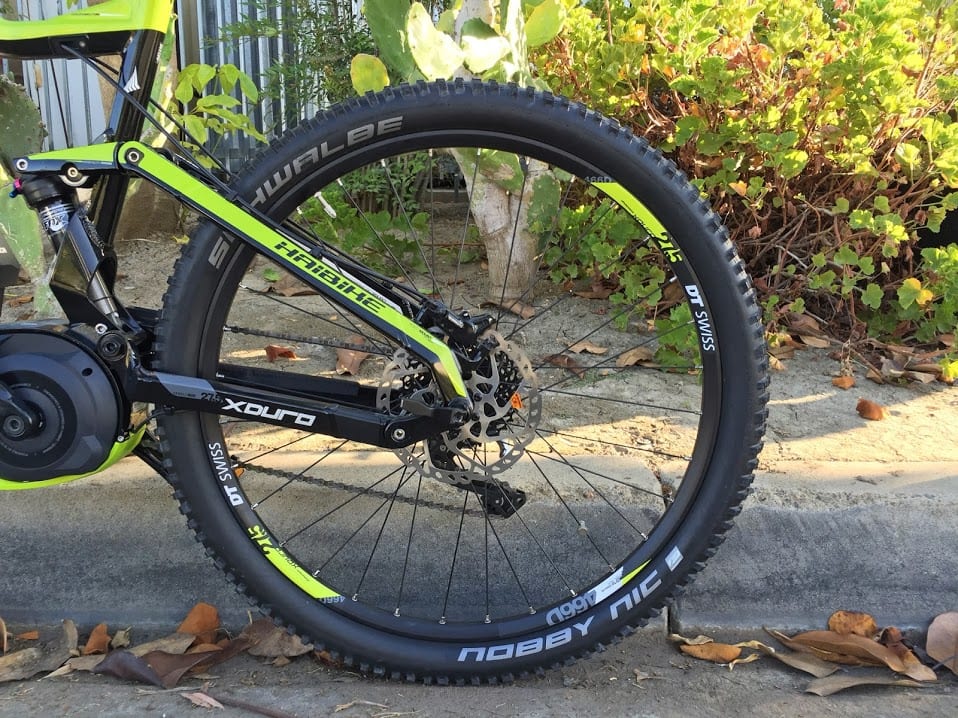
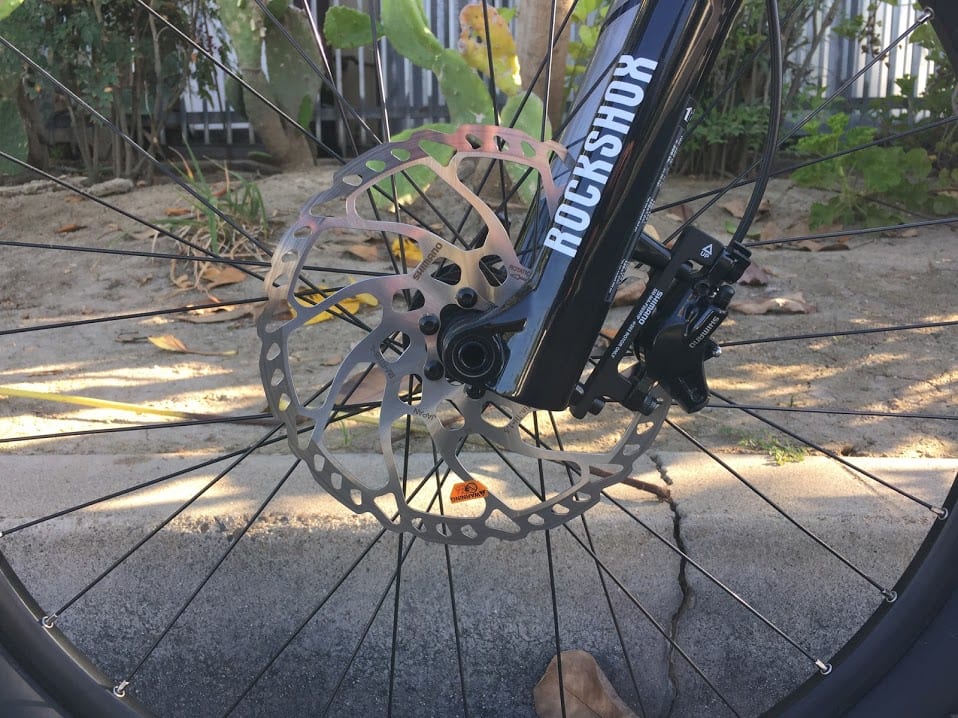

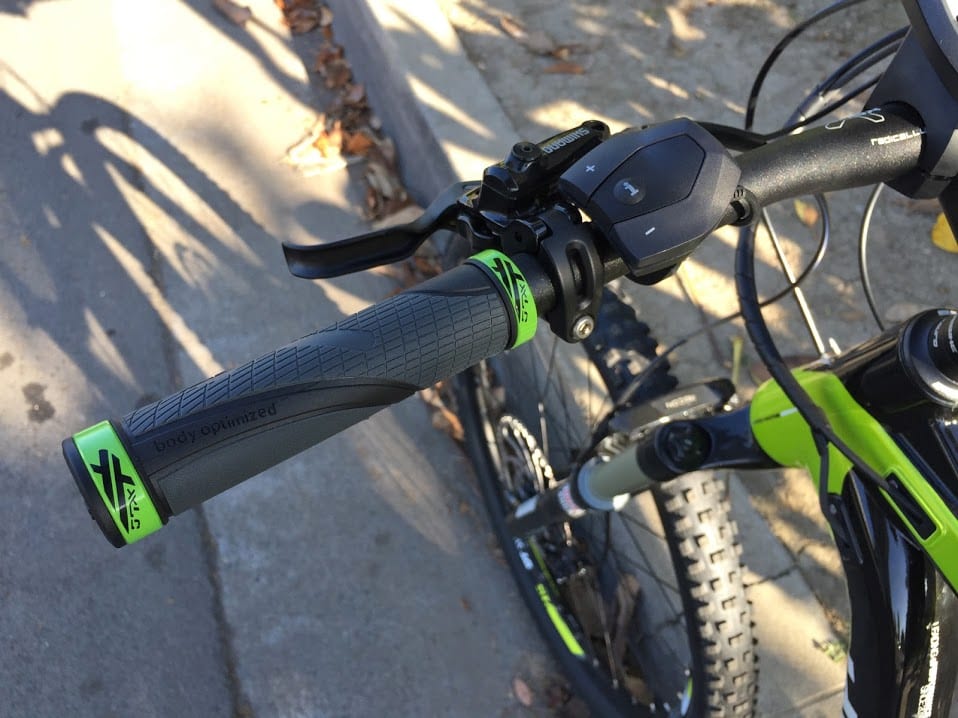
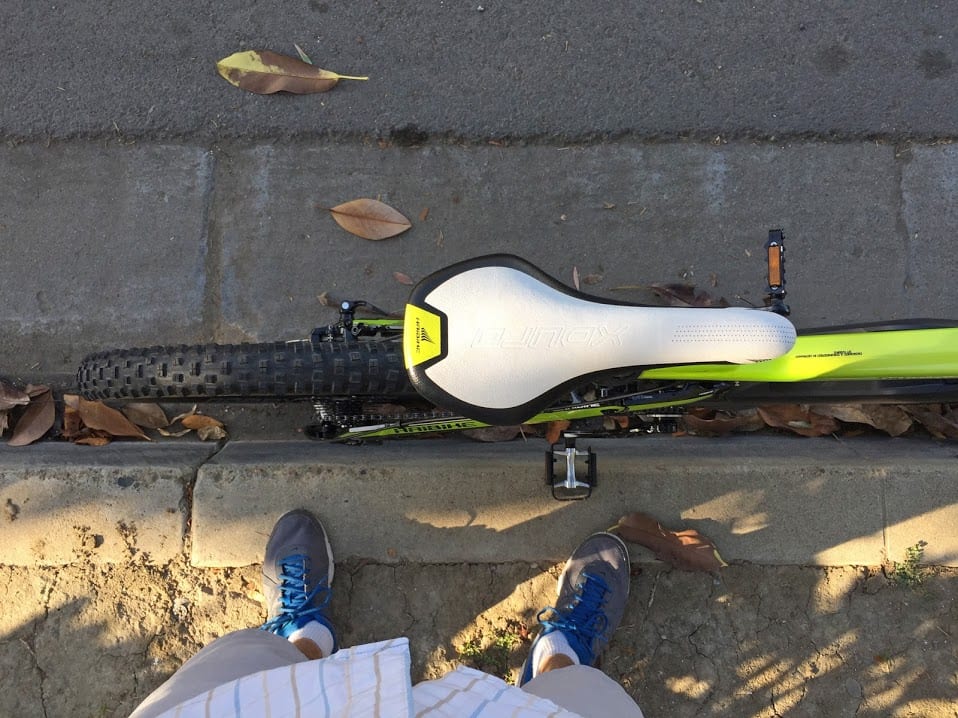

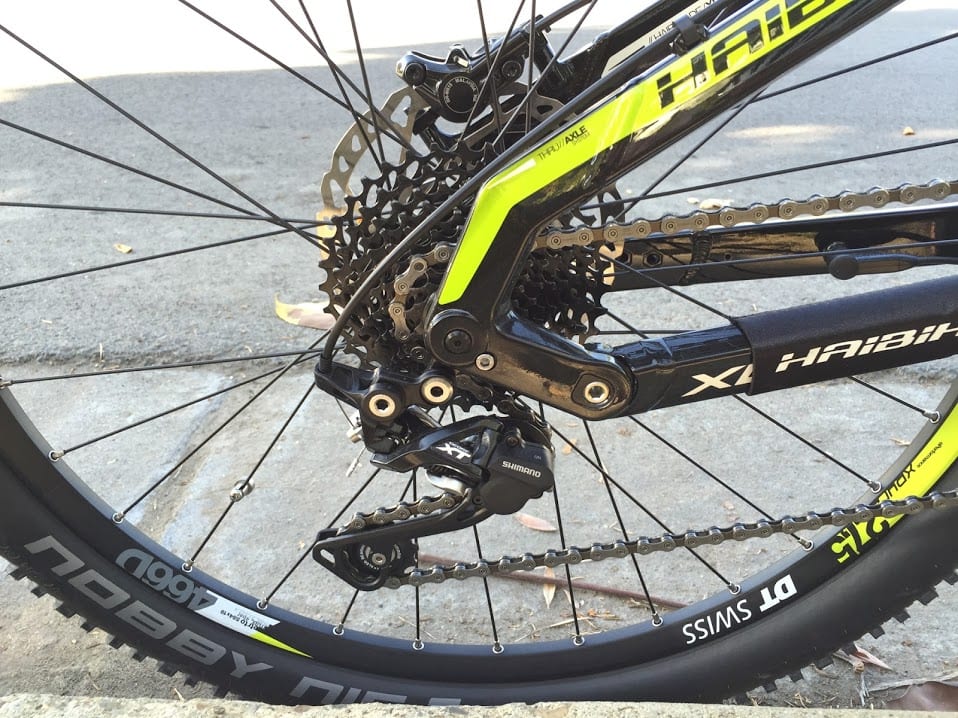
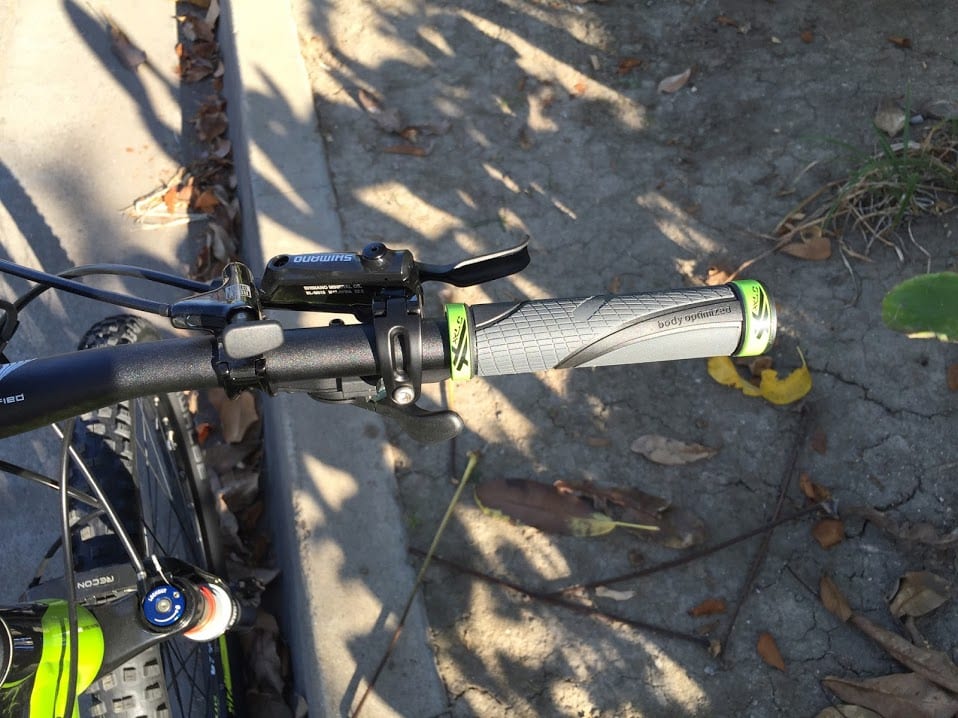

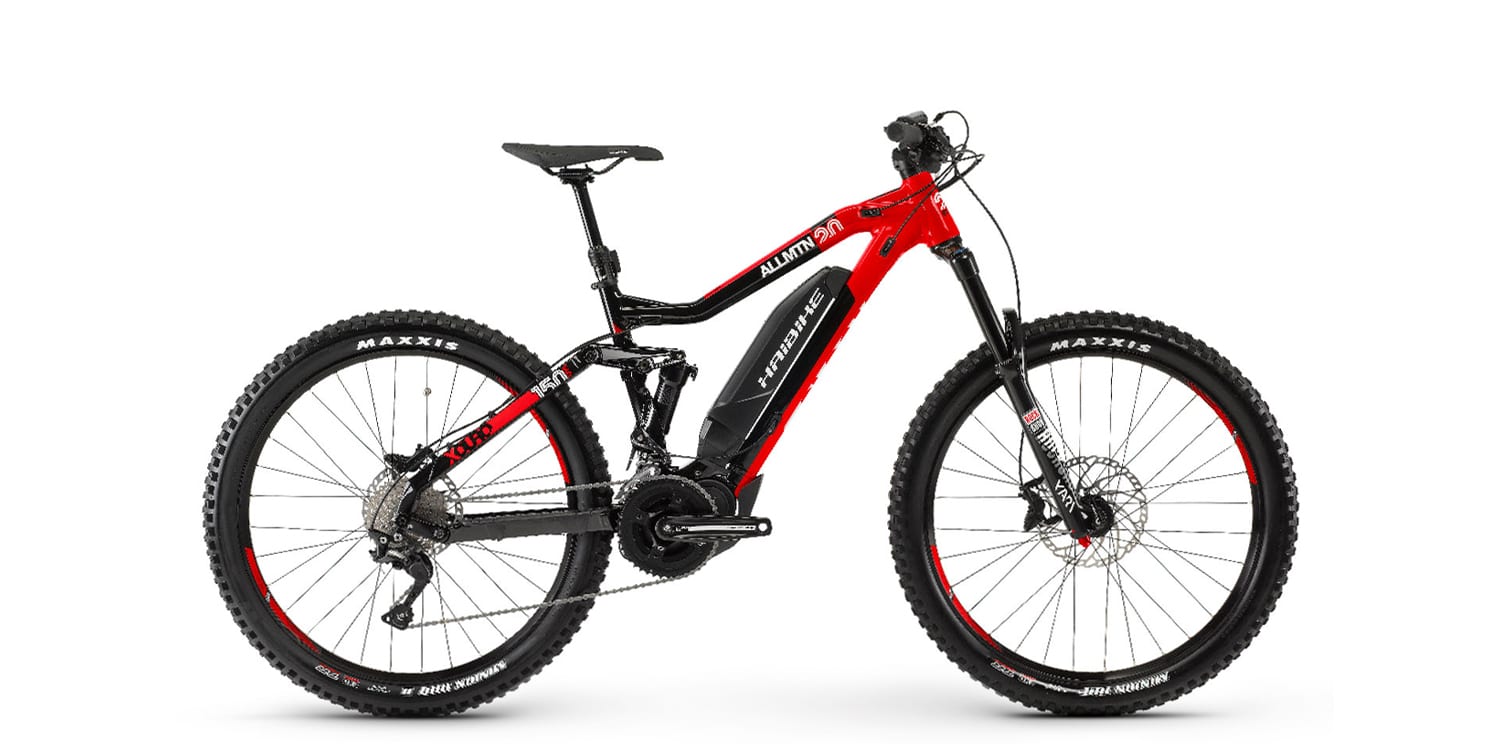
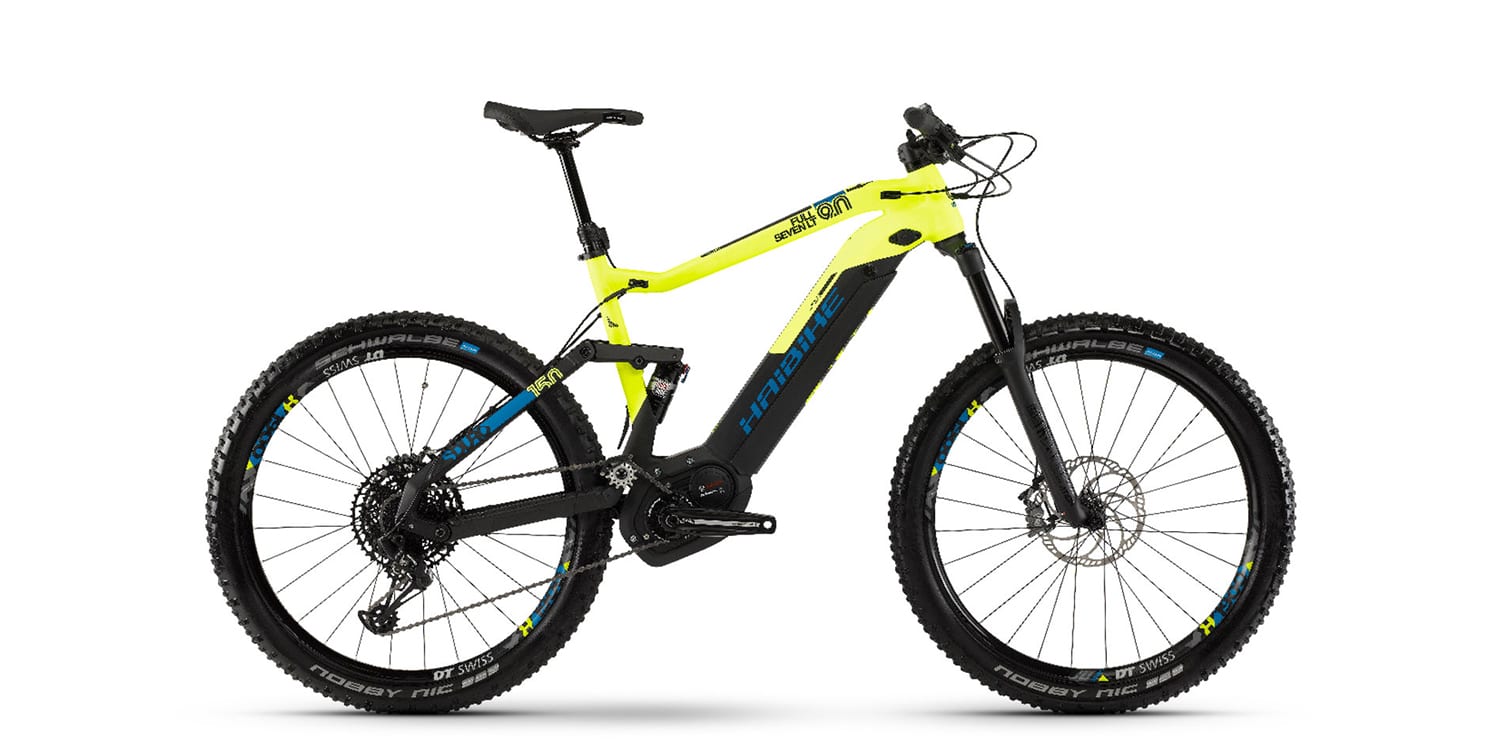
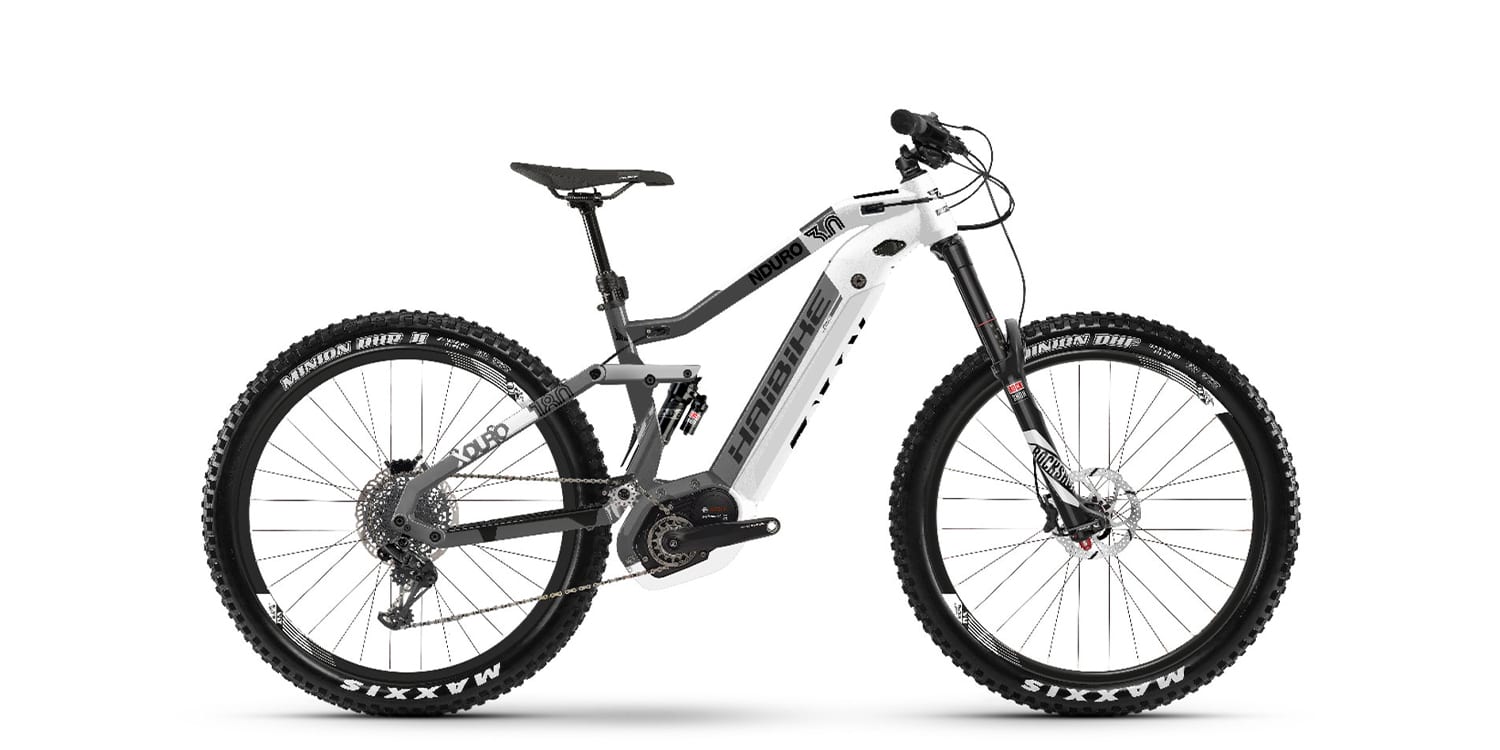
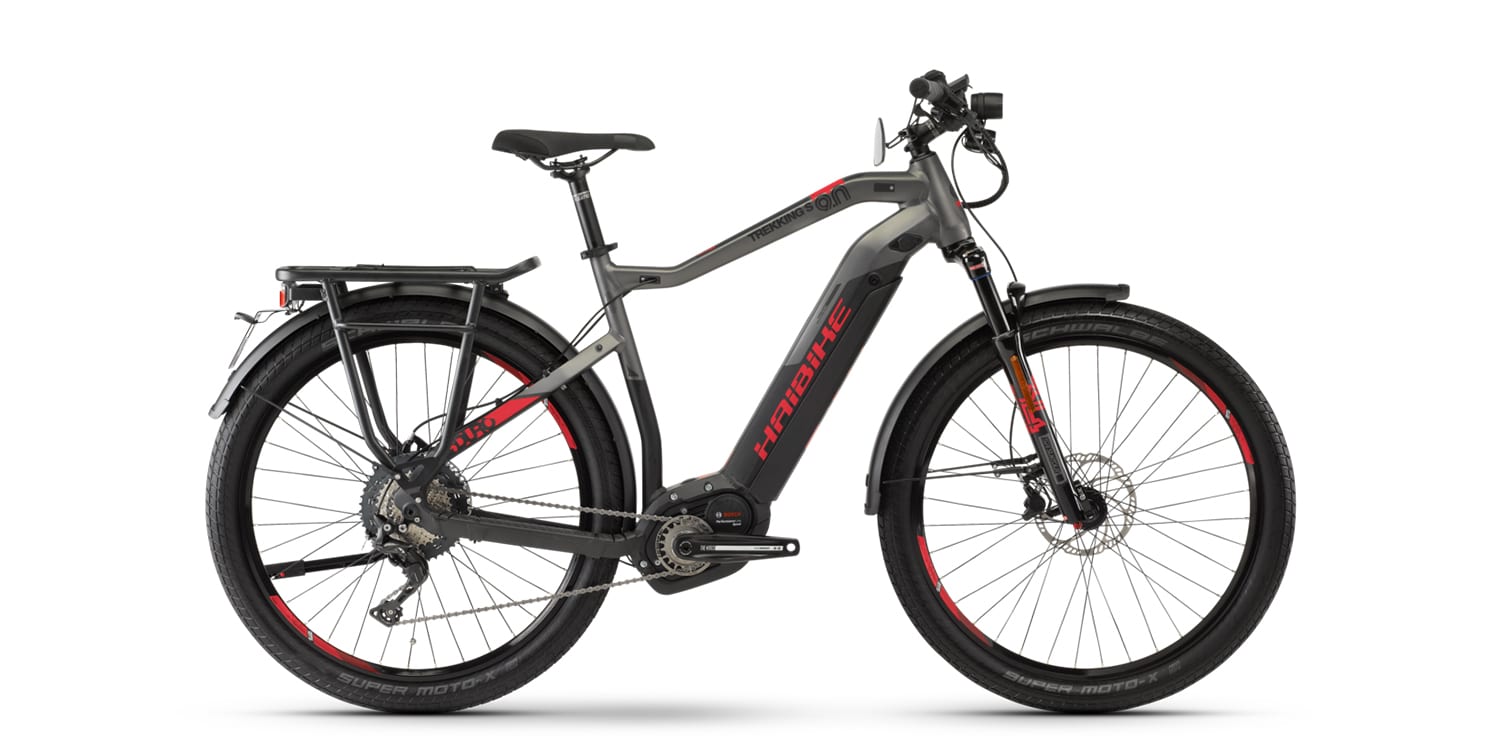
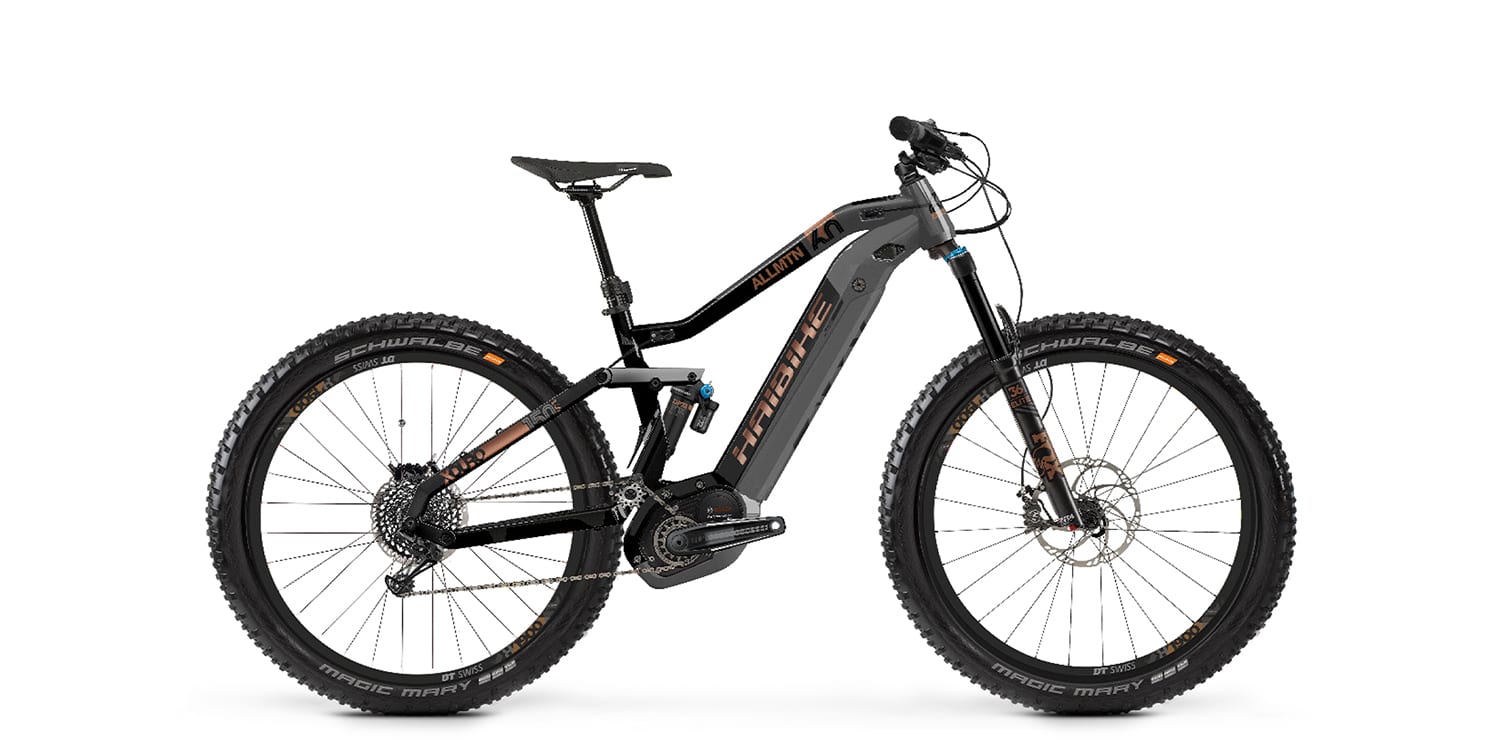
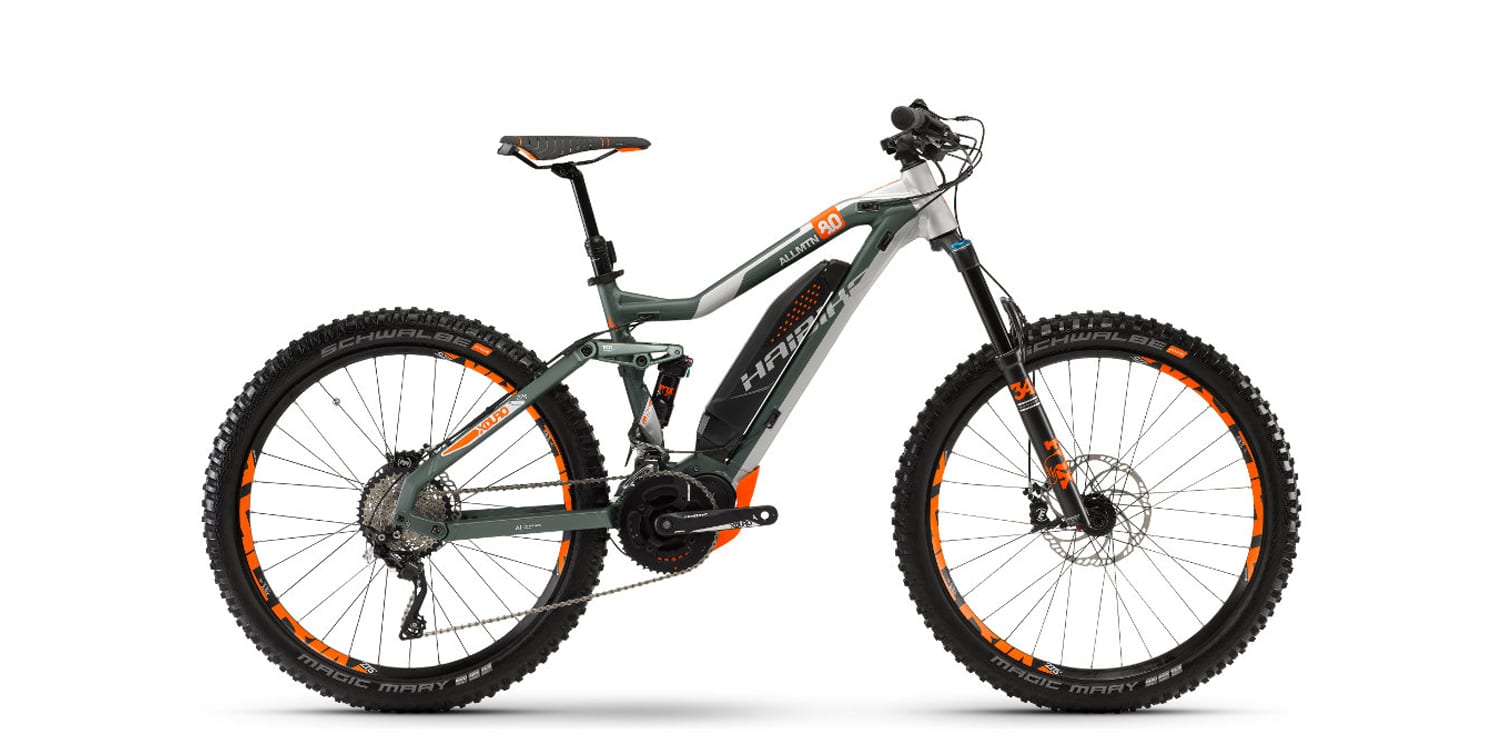
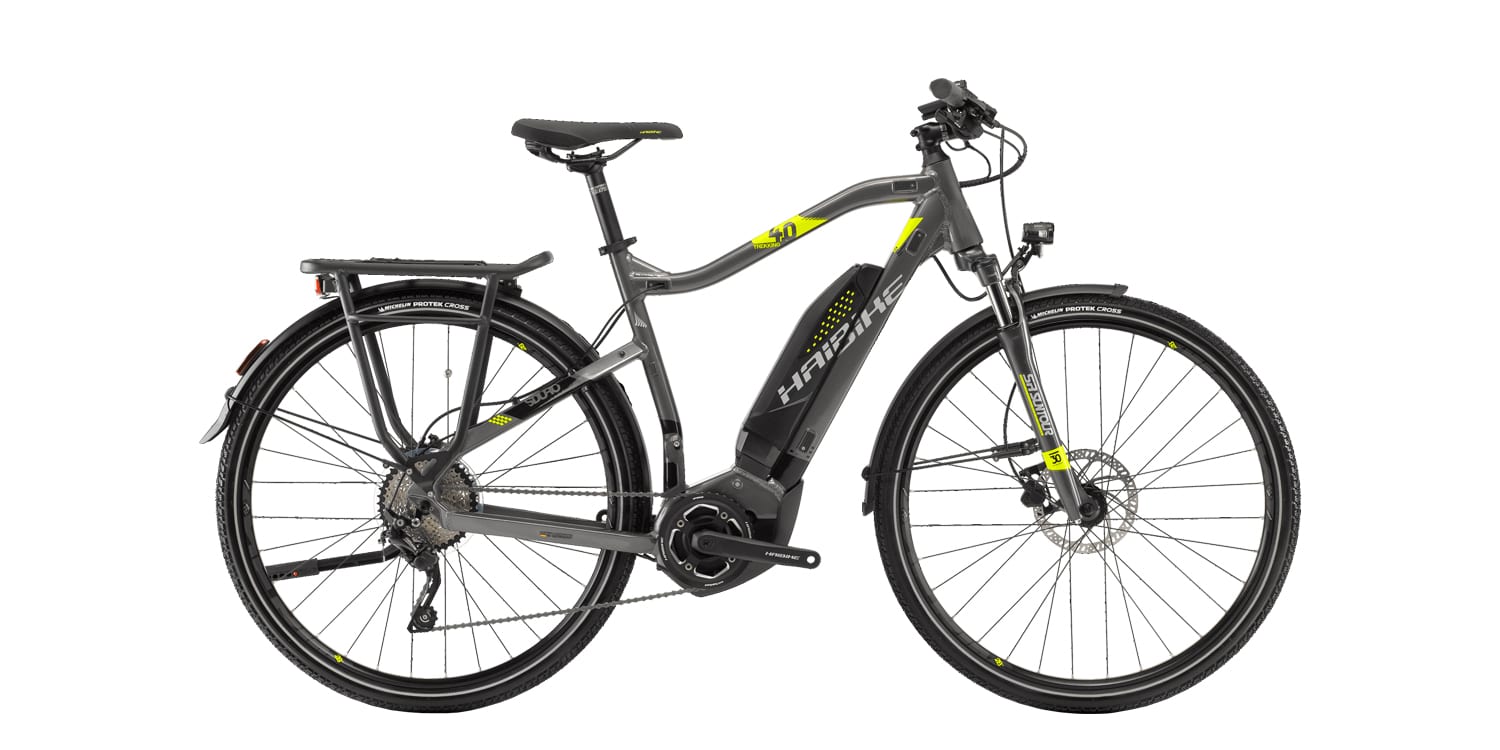
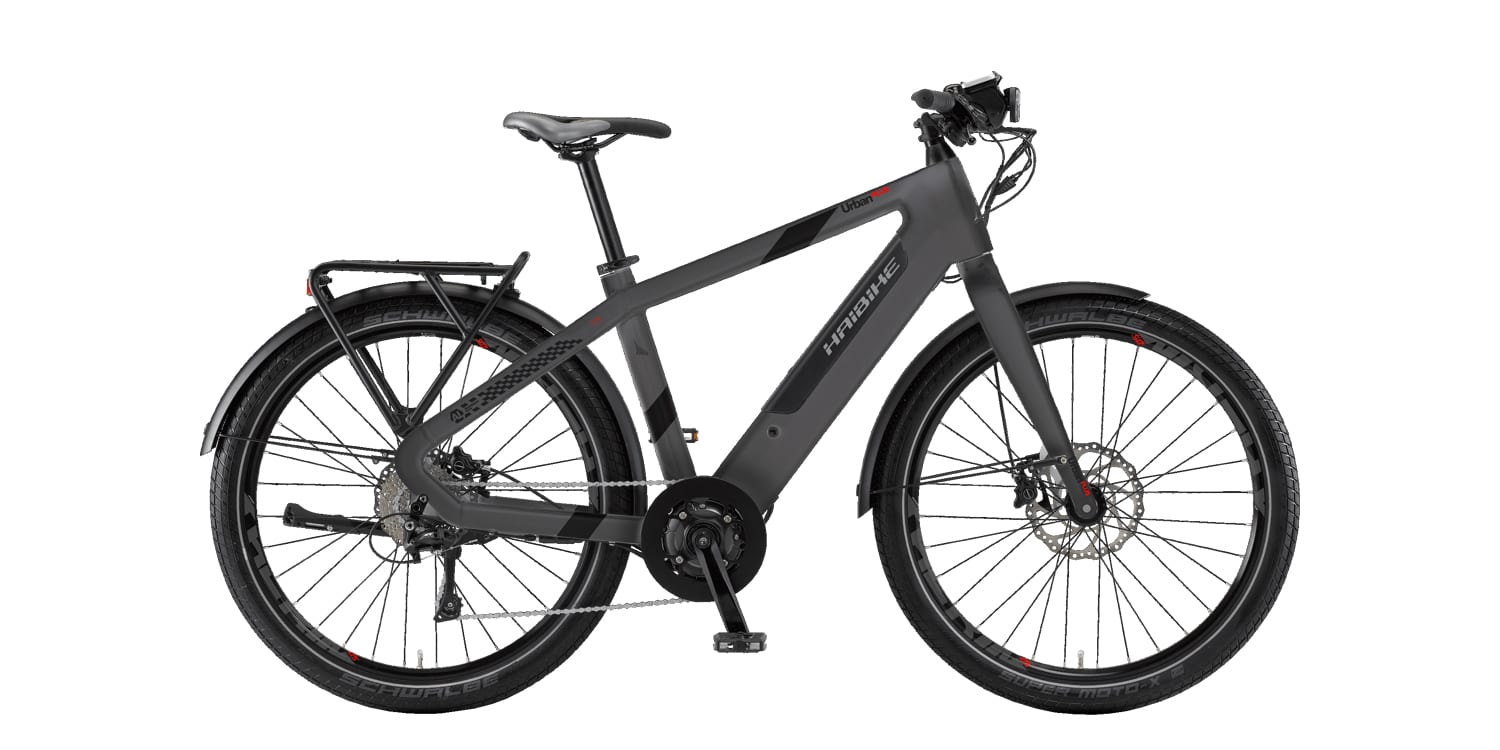
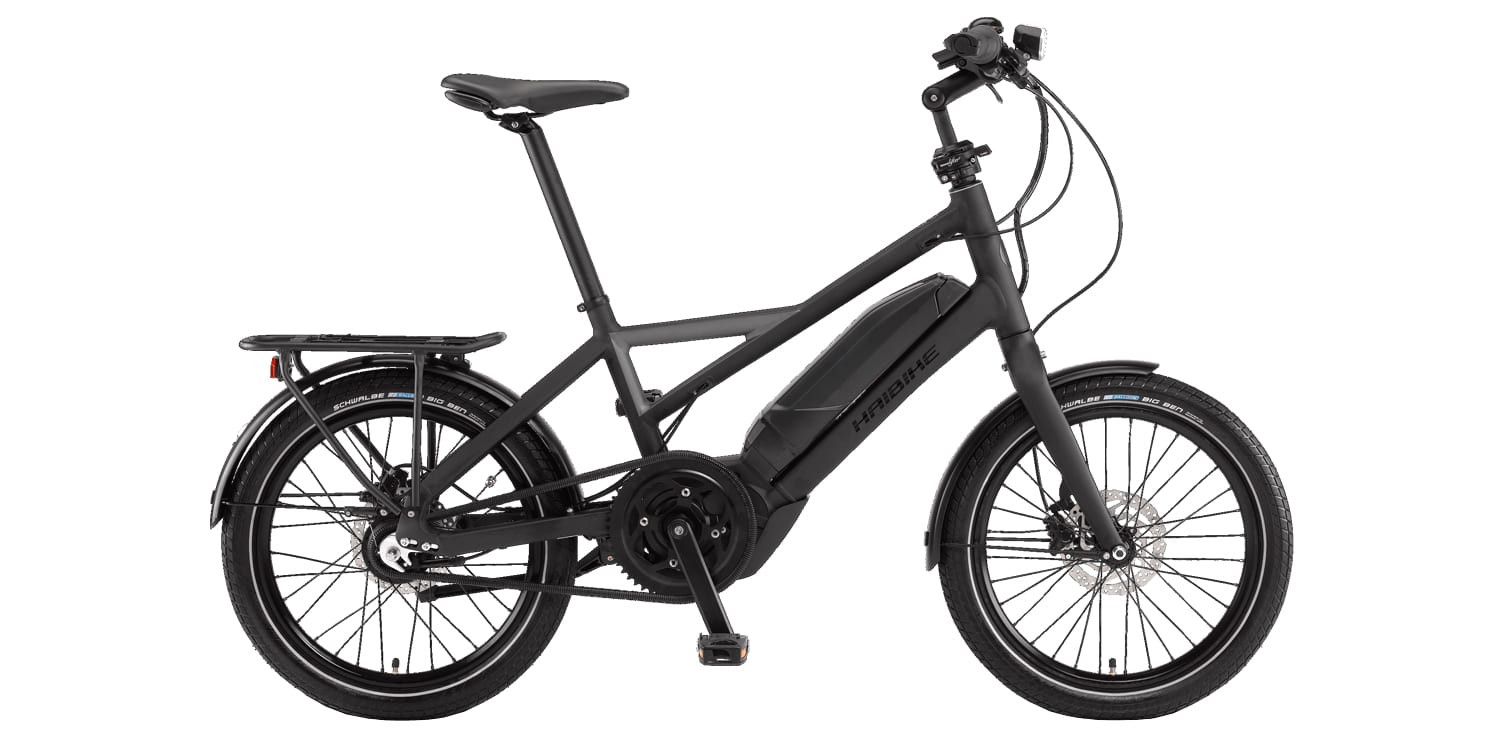
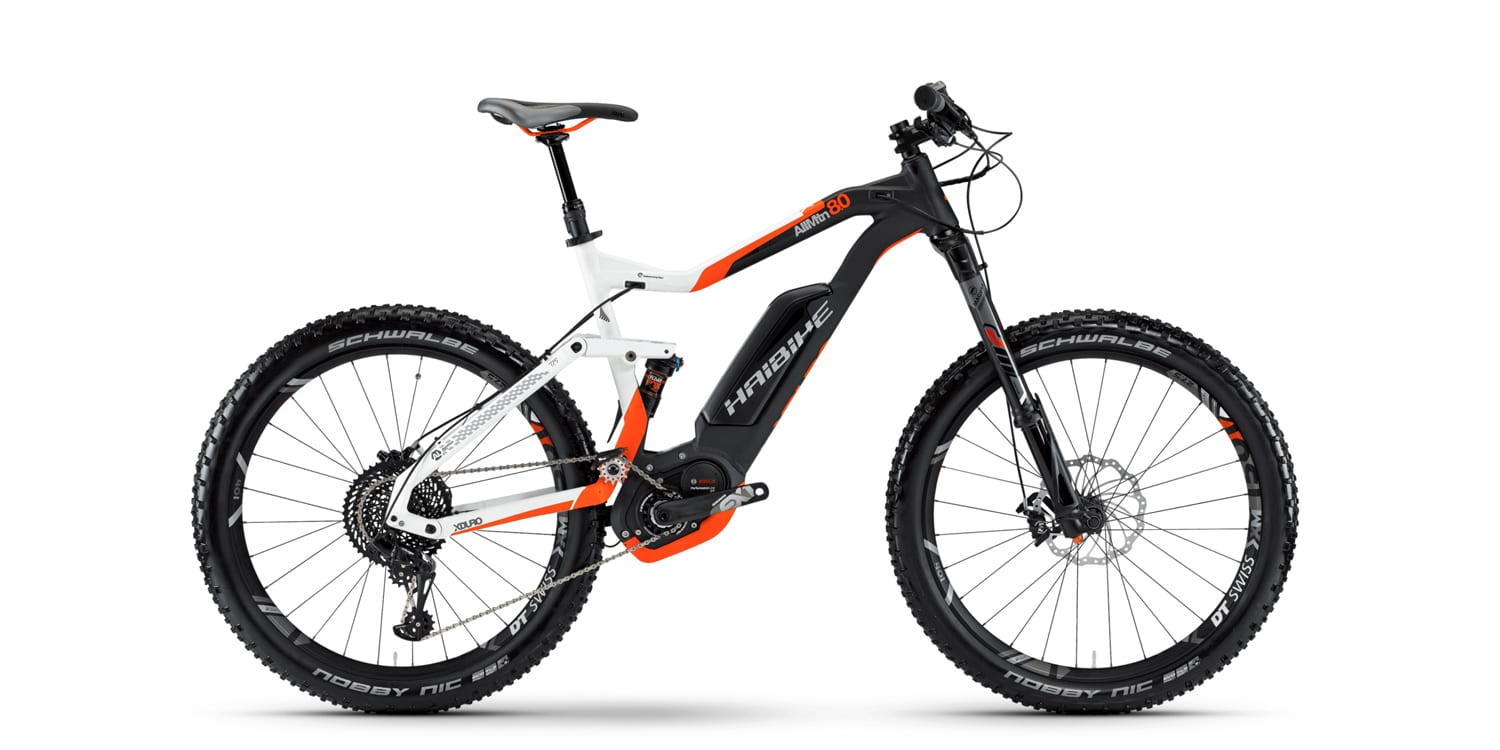
Jack says
Such a nice bike, based on the video & written reviews. It’s a shame there isn’t a discussion here. I don’t see a reference to connecting points on the chain stays to mount a fender and/to rack…and one thing I’ve learned from Court’s reviews is that the ‘mountain bike/commuter bike’ line blurs when a manufacturer allows for one to take a trail-ready bike like this one and adapt it for multiple purposes. Court, were there solid connection points on the chain stays to mount a rack, do you remember?
Court Rye says
Great points Jack, unfortunately many of the full suspension Haibikes lack mounting points (bosses, braze ons) for racks, fenders or bottle cages. You can usually add light weight plastic fenders with zip ties and beam style racks that connect to the seat post (ideal for full suspension due to travel on the rear swing arm). I’ve mentioned this in some reviews and not in others, I try to write from scratch to capture different angles but sometimes neglect details. Great bike, my Uncle has this and has been using it with rack and fenders to commute, here’s a video of him discussing it.
Darrell says
Court, I’ve seen that one twice. Lots of good information. Hope you do more of that type. Dealers an experienced riders of Haibikes.
Darrell says
Im useing the Topeka seat post rack. Slide on a basket or one of their bags.
Get the one that angles up as you will need to clear the 4 3/4 inch suspension travel.
Phil Kurello says
Hi Court , Luv your reviews. Road my Giant Anthem 29er today in NE PA. through light snow and ice in the morning which melted into mud. As I was struggled to keep peddling to make the up grade in mud. I kept dreaming about this 2015 Xduro FS . It seem like it would shorten my 35 mile rides from 5 hours to <3 hours. Can you comment on long rides thru mud pack with ebikes . It always seems so nice and sunny on your Demo rides in Austin. Also any looks/rides on 2016 Haibike with new Bosch Cx motor ? Thanks much, Phil Kurello aka Lengthyrider
Court Rye says
Hi Phil! Sounds like you’ve got quiet the ride… mud is one of the most difficult terrain types because it tends to be heavier than snow (even damp snow) and is still wet and sticks to your bike adding weight and creating instability. Many of my videos are shot in sunny locations because that’s where the manufacturers are and they let me test their bikes now on site. I also travel around the country and tend to pick warm days to film so my hands don’t get cold holding the camera :P here’s one review from the snow in Colorado. I do plan on reviewing the 2016 Haibike models and hope to do so very soon so keep an eye out!
Phil K says
My other question is what percent quicker is an EMB vs a standard MTB going up a standard 2% Railroad Grade ? Not having access to vendors locally , ,I am trying to figure out how if getting an EBM will allow me to average 12MPH when I usually travel at 8 mph on a standard MTB.
Court Rye says
Hi Phil! This definitely depends on your fitness level but in my experience an E-MTB travels at a higher speed when climbing because it requires fewer rests and less shifting down to lower gears. The motor support enables you to ride consistently at higher speeds while pedaling and thus your overall trip time should decrease given the same or similar effort as a traditional mountain bike. I also find that the sense of movement motivates me and there’s more of a thrill with nonstop riding so there’s a mindset that goes along with the increased power support.
Lengthyrider says
Thanks . I enjoyed viewing your in- depth interview RE your uncle’s (Dr G.R. ) 4K experiences. I also appreciate your maintenance vids. I guess the main issues of lengthy rides are flats and chain life. Seems like 500-600 miles is typical chain life for This mid drive Bosch system .
Mark M says
Hey Court! I have to write and tell you that I just ordered a 2015 Xduro Full 7 yesterday (should be able to pick it up in a week) and to say that your reviews (video and detailed text data) have helped me immensely in my research !! I’m an analytical type person who enjoys the large amount of data you provide – keep up the great work!! I think I got a pretty good deal ($3799) since its a 2015 model and the 2016’s are starting to arrive. Right off the bat, I’m having the shop add lights (front/rear) and a RockShox reverb stealth dropper post (assuming it fits and the hose can be run internally – I fell in love with that feature on my current bike). I do feel some guilt this morning since I bought a new non-E Mt Bike (2012 Scott Genius LT 20) just 2.5 years ago that this will probably replace. But my eGo cycle electric scooter that I’ve been non-winter commuting for 11 years finally gave up the ghost so I’m hoping I can use this bike as a replacement for commuting and for Mt biking. I really enjoyed the interview with your uncle so I’ll have to keep an extra chain handy it sounds like. I can’t imagine how often chains will need to be replaced on a often-used E-bike w/o shift sensing (any anecdotes or data on that?). I was going to try to hold out for the Bosch Nyon control system because I’m a sucker for electronic gadgets like that but the dealer (and research) convinced me that it probably won’t be available in the US for a long time if ever. What are your thoughts on that? Also, I guess the “walk assist” button on the Bosch Inutvia is disabled in the US also, any words as to if/when that might be enabled? I can’t imagine I will be able to climb every trail I ride on so the walk assist seems like a great feature and if its limited to a low speed it shouldn’t be a safety issue, right?
Court Rye says
Hi Mark! Thanks for the positive feedback, I work really hard to get all of the details here and am glad the videos and technical data aided in your decision making process. Indeed, it does sound like you got a sweet deal! I love the Fullseven model personally, super responsive and sporty but also comfortable :)
I’m not completely up to speed with the Nyon display but heard that some consumers in the European markets were struggling with possible bugs early on so maybe the delayed US launch has something to do with that. As far as the chain, doesn’t hurt to be proactive so you’ve got parts ready for if/when it drops. The Bosch system does have shift sensing built in but I believe it’s software driven vs. physical on e-RAD and the Impulse motors. No clue on walk-assist, that comes up every now and again, I think I saw it working once in the US but was told later that the bike was an import from Europe for demo purposes.
Mark M says
Ok, well I finally got my 2015 FS and it is simply amazing!! I knew it was going to be fun on the trails but Wow! It was so fun to be able to climb up hills with such reduced effort where I could then go bombing back down. I feel like a 20-something year old again (or younger!). I had just test rode some e-bikes around a parking lot and on a flat paved road to get a feel for them before plunking down the big $$$ but I had intended on mainly using it for Mt biking on dirt trails and fire roads with a little commuting. So I was a little apprehensive about how will it would perform climbing when I hadn’t even tried it yet but NO WORRIES now!!! :-) I’m now a big advocate!! Thanks again Court for your awesome reviews, it really helped!
Mark
Court Rye says
Wow! It sounds like you’re having a blast Mark, thanks for sharing your experience and enthusiasm for the FullSeven… it’s an awesome product and the price tag on this particular model makes it much easier to afford (and less concerning to really enjoy on rough trails out in the world than the $6k+ other models).
Darrell says
Court, great job on your reviews as I’ve seen a lot of them. Two weeks ago I took in the Wheel an Sprocket bike sale at Milwaukee State Fair Park. I got a great deal of $3,500 but tag said it was $5,200 so wondering why I’ve seen $5,500 on some. When I get mine to 19.6 mph if seem like the brakes are on. I’ve seen several dangles on you tube an guess they are for performance? Speed? Why is the law for 20 mph an then some of the Hai bikes do 28 mph? I’m 72 an had open heart surgery an have a Trek Domone 6.2. Seem you have to ride a lot to loose weight on that bike but this one I’m doing 16 to 19 mph for miles an I’m dropping weight. My question is what are your thoughts on the dangle?
Court Rye says
Hi Darrell, there are some stock Class 3 speed pedelecs being sold by Haibike (including the Race models) but most are limited to 20 mph to be recognized as Class 1 and used on trails. Here’s an article I wrote about classes… and yes you can buy aftermarket dongles to connect and override the system but it voids the warranty and changes the class which might limit where you can use the bike :)
Phil says
Hi Court. I’m new to the ebike world and have found your super thorough reviews to be incredibly valuable. You are officially my go to source for information, so thank you for all that you are doing here! OK…I have decided to get either the Haibike FatSix or the FullSeven RX for me. But I am undecided on what to get for my wife. We rode a Townie Electra yesterday and both thought it was way more comfortable than anything else we’ve tried. But I’d love to know what you think about that brand, the drum brakes, and the internal shifting mechanism. Long life, durability and low maintenance are huge factors for me to sort out, so any advice you can offer would be super appreciated. Thank you!! phil
Court Rye says
Hi Phil! I love the newer 2016 Electra Townie Go! models that use the Bosch system. The older ones used hub motors and just weren’t as refined. They still work and you could probably save some money on them but if that’s not a concern, go for the newer ones. Trek bought Electra a couple years back and has now introduced their own line of ebikes. Exciting times in the industry! In any case, yeah, the Townie Go! is great and your two Haibike choices sound great as well, should be fun riding together :D
Aaron says
Hi Court! I was wondering if you could explain the differences between this bike and the XDURO FullSeven S Pro?
Court Rye says
Hi Aaron! I’m on the run so I can’t be super specific but the primary differences between the different trim levels on Haibike tend to be more gears, a better derailleur and nicer brakes (and other accessories). Sometimes it means going from a coil suspension to a lighter weight air fork. Hope this helps… give one of the dealers a call, I’m sure if they sell both they would be happy to dig in. Again, sorry I can’t share more at the moment :(
MITCHELL DAVIS says
Hi Court! I was considering purchasing the Full Seven S Pedelec version but wasn’t able to test ride one. My question is which version handles hills better? I was told by one dealer that the non S Pedelec handles the hills better than the S Pedelec version because with extra speed potential comes less torque.
Court Rye says
Hi MITCHELL, it sounds like the shop gave you some good information. The difference between the Bosch Performance Line Speed and the Performance Line CX is 63 Newton meters of peak torque vs. 75 Nm. The thing is, some Haibike models use the Performance Line, non-CX and those have the same torque as the speed… but only go 20 mph vs. 28 mph. In short, if you are a heavier rider, someone who encounters a lot of hills, or someone who is less concerned about speed, then maybe the CX would be the best option. It will also keep your bike as a Class 1 which is allowed on more mountain bike trails :)